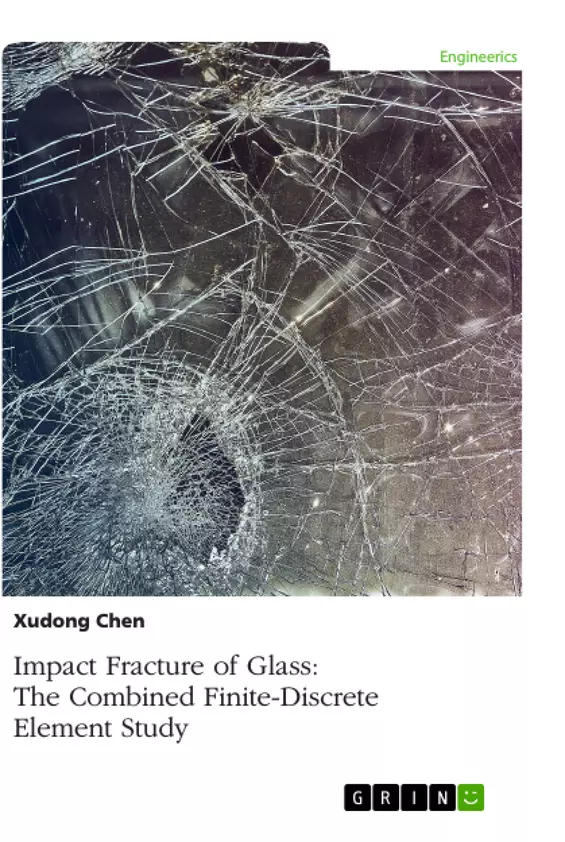This book introduces theoretical and practical aspects for modelling the impact fracture of glass and laminated glass using the combined finite-discrete element method (FDEM). The FDEM is a branch of the discrete element method (DEM), and combines finite element formulation into individual discrete elements. Thus, contact forces are evaluated more accurately. Regarding the fracture of glass, a Mode I-based smeared crack model is extended and employed in the FDEM, enabling crack initiation and propagation be captured naturally. Based on the employed method and the crack model, numerical examples on fracture of glass under both hard and soft impacts are presented and validated with data from computational and experimental sources. The combined finite-discrete element method is proven to be a reliable and robust tool for examining the impact fracture responses of glass.
Inhaltsverzeichnis (Table of Contents)
- Introduction
- Background
- Structural Applications of Glass
- Annealed Glass
- Heat-Strengthened Glass
- Toughened Glass
- Laminated Glass
- Summary
- Brittleness and Rupture of Glass
- Introduction
- Theoretical Examination
- Experimental Investigation
- Computational Study
- FEM
- DEM
- FDEM
- Fracture Model of Glass
- Overview
- Smeared Crack Model
- Strain Softening Curve
- Monolithic Glass
- Validation
Zielsetzung und Themenschwerpunkte (Objectives and Key Themes)
This book explores the impact fracture of glass and laminated glass, employing the combined finite-discrete element method (FDEM) as a novel computational approach. The book aims to provide a comprehensive understanding of the FDEM principles, its implementation, and validation through various case studies.
- Impact fracture behavior of glass and laminated glass
- Application of the combined finite-discrete element method (FDEM) in structural analysis
- Validation of the FDEM through comparison with experimental data and existing literature
- Parametric studies to investigate the influence of different factors on glass breakage
- Demonstration of the applicability of FDEM for analyzing the impact mechanism of glass
Zusammenfassung der Kapitel (Chapter Summaries)
- Chapter 1 provides an introduction to the book, outlining the background and structural applications of different types of glass, including annealed, heat-strengthened, toughened, and laminated glass. It also summarizes the importance of understanding glass fracture behavior under impact conditions.
- Chapter 2 delves into the phenomenon of brittleness and rupture of glass. It discusses theoretical examinations, experimental investigations, and various computational approaches, such as FEM, DEM, and FDEM, used to study glass fracture.
- Chapter 3 focuses on the fracture model of glass, particularly the smeared crack model and the strain softening curve, which are essential for simulating crack initiation and propagation in glass structures under impact loading.
- Chapter 4 investigates the impact behavior of monolithic glass, validating the proposed fracture model and performing parametric studies to analyze the influence of different factors on glass breakage.
Schlüsselwörter (Keywords)
The main keywords and focus topics of the book include: impact fracture, glass, laminated glass, combined finite-discrete element method (FDEM), structural analysis, crack initiation, crack propagation, parametric studies, validation, experimental data, fracture model, smeared crack model, strain softening curve.
- Citar trabajo
- Xudong Chen (Autor), 2019, Impact Fracture of Glass. The Combined Finite-Discrete Element Study, Múnich, GRIN Verlag, https://www.grin.com/document/505219



